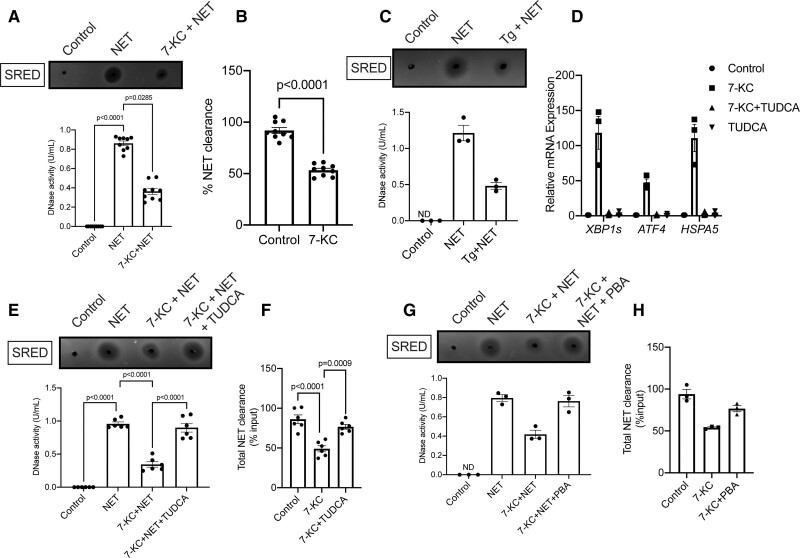Figure 5.
Lipid-induced endoplasmic reticulum (ER) stress impairs the neutrophil extracellular trap (NET)-induced DNase response in vitro. A, Quantification of total DNase activity in the culture supernatants of control HepG2 cells or 7-ketocholesterol (7-KC) treated HepG2 cells incubated with NETs for 12 h. B, The amount of remaining extracellular ds-DNA in the cell culture supernatants of control or 7-KC-treated HepG2 cells incubated with 10 μg NETs for 12 h was analyzed by Qubit assay. The graph represents the efficiency of NET clearance as a percentage of input NETs. The data presented in A and B are plotted from 9 biological replicates pooled from 3 independent experiments. C, Quantification of total DNase activity in cell culture supernatants of HepG2 cells treated without or with thapsigargin (Tg) and incubated with NETs for 12 h. D, Analysis of expression levels of ER stress–related genes by qPCR in appropriate group of HepG2 cells as indicated. n=3 biological replicates. E, Measurement of NET-induced DNase response in culture supernatants of HepG2 cells treated with 7-KC in the absence or presence of tauroursodeoxycholic acid (TUDCA). F, Quantification of efficiency of NET clearance from the supernatant of HepG2 cells treated with 7-KC in the absence or presence of TUDCA. The data presented in E and F are plotted from 6 biological replicates pooled from 2 independent experiments. G and H, Similar to E and F, except that HepG2 cells were treated with 4-phenylbutyric acid (PBA) instead of TUDCA. The data are presented as Mean±SEM from 3 independent biological replicates. ND indicates not detected.

